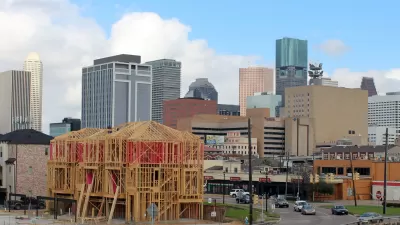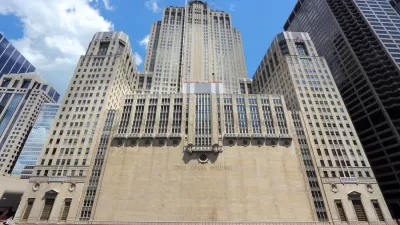Industries over leased and developers over built. The city of Houston's office market has gone from boom to bust in only a few years.

"Houston’s once-thriving office market is quickly losing energy," according to Eliot Brown. "In all, 28% of the city’s office space now sits empty or otherwise available for lease, up from 20% in early 2012," reports Brown, using data from real-estate services firm JLL.
"The trouble extends from small engineering and drilling companies to oil giants and their namesake towers," according to Brown, after two years of the worst slump for the city since the oil bust of the 1980s. The city hasn't reached 1980s level of pain, however, thanks to a more diverse economy. "Back then, the city became notorious for its forest of empty skyscrapers. Today, by contrast, Houston is still producing jobs as areas like health care are thriving."
As Brown explains, oil companies projected years of growth and were far to optimistic with their leasing activities in 2012, 2013, and 2014. Developers, reacting to that overly optimistic demand, built new office spaces at a breakneck pace. In 2014, "nearly one-fifth of all the office space under construction in the U.S. was located in Houston."
[The article might be behind a paywall for some readers.]
FULL STORY: Office Pileup Gets Worse in Houston

Study: Maui’s Plan to Convert Vacation Rentals to Long-Term Housing Could Cause Nearly $1 Billion Economic Loss
The plan would reduce visitor accommodation by 25,% resulting in 1,900 jobs lost.

North Texas Transit Leaders Tout Benefits of TOD for Growing Region
At a summit focused on transit-oriented development, policymakers discussed how North Texas’ expanded light rail system can serve as a tool for economic growth.

Why Should We Subsidize Public Transportation?
Many public transit agencies face financial stress due to rising costs, declining fare revenue, and declining subsidies. Transit advocates must provide a strong business case for increasing public transit funding.

How to Make US Trains Faster
Changes to boarding platforms and a switch to electric trains could improve U.S. passenger rail service without the added cost of high-speed rail.

Columbia’s Revitalized ‘Loop’ Is a Hub for Local Entrepreneurs
A focus on small businesses is helping a commercial corridor in Columbia, Missouri thrive.

Invasive Insect Threatens Minnesota’s Ash Forests
The Emerald Ash Borer is a rapidly spreading invasive pest threatening Minnesota’s ash trees, and homeowners are encouraged to plant diverse replacement species, avoid moving ash firewood, and monitor for signs of infestation.
Urban Design for Planners 1: Software Tools
This six-course series explores essential urban design concepts using open source software and equips planners with the tools they need to participate fully in the urban design process.
Planning for Universal Design
Learn the tools for implementing Universal Design in planning regulations.
City of Santa Clarita
Ascent Environmental
Institute for Housing and Urban Development Studies (IHS)
City of Grandview
Harvard GSD Executive Education
Toledo-Lucas County Plan Commissions
Salt Lake City
NYU Wagner Graduate School of Public Service





























